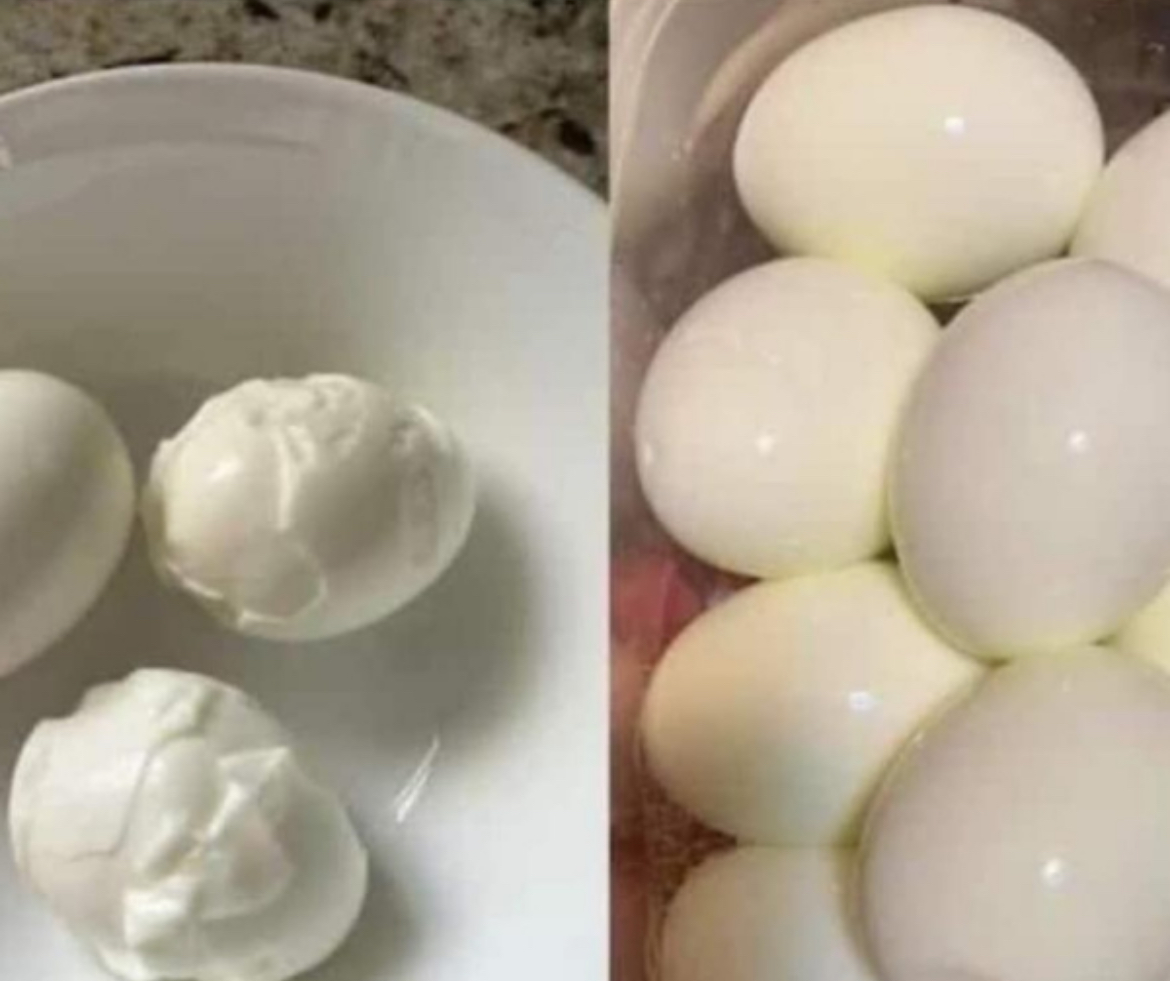Peeling hard-boiled eggs can feel like a game of chance—sometimes they come off smoothly, and other times you’re left with a pockmarked mess. But what if we told you there’s a foolproof hack that chefs swear by to ensure perfectly peeled eggs every single time? Whether you’re prepping deviled eggs for a party or meal-prepping egg salad, this clever trick will save you time, frustration, and wasted eggs. Let’s dive in!
The Struggle is Real: Why Are Some Eggs So Hard to Peel?
We’ve all been there—excitedly cracking into a hard-boiled egg, only to end up with a mess of shredded whites and stuck-on shell. It’s enough to make you question your culinary skills. But don’t worry, you’re not alone. The difficulty in peeling eggs is a common kitchen frustration, and it has everything to do with science.
Why Some Eggs Are Hard to Peel
The main culprit? Freshness. Fresh eggs have a lower pH level and a tighter bond between the egg white and the inner shell membrane. This makes the membrane cling stubbornly to the white, tearing it apart when you try to peel it. As eggs age, their pH naturally rises, weakening this bond and making them easier to peel. That’s why slightly older eggs are often recommended for boiling.
But let’s be real—most of us don’t have the time or forethought to age our eggs before boiling them. So what can you do when all you’ve got are farm-fresh or recently bought eggs?
The Chef’s Clever Hack
The Chef’s Hack: Baking Soda to the Rescue!
### What You Need:
– Eggs (as many as you need)
– Water
– 1 teaspoon baking soda per quart of water
### Why It Works:
Adding baking soda to the boiling water raises the pH level of the eggs, mimicking the natural aging process. This loosens the inner membrane, allowing the shell to slip off effortlessly after cooking. It’s a science-backed trick that chefs use to achieve consistently smooth results.
## Step-by-Step Instructions
### Step 1: Prepare the Water
1. Fill a large pot with enough water to fully submerge your eggs.
2. Add **1 teaspoon of baking soda** for every quart (4 cups) of water. Stir to dissolve.
*Pro Tip:* If you’re boiling a dozen eggs or more, make sure your pot is large enough to prevent overcrowding, which can cause uneven cooking.
—
### Step 2: Gently Add the Eggs
1. Carefully place the eggs into the pot using a spoon or ladle to avoid cracking.
2. Bring the water to a gentle boil over medium-high heat.
*Why Gentle Matters:* A rolling boil can jostle the eggs too much, increasing the risk of cracks.
### Step 3: Cook the Eggs
1. Once the water reaches a boil, reduce the heat to low and cover the pot.
2. Let the eggs simmer for **9–12 minutes**, depending on how firm you like your yolks:
– **9 minutes:** Slightly soft yolk
– **10–11 minutes:** Firm but creamy yolk
– **12 minutes:** Fully set yolk
—
### Step 4: Cool Down Quickly
1. Transfer the cooked eggs to an ice bath (a bowl filled with water and ice cubes). Let them sit for at least **5–10 minutes** until completely cool.
2. Cooling the eggs stops the cooking process and makes them easier to handle.
Here’s where the chef’s trick comes in, and it’s surprisingly simple: steam your eggs instead of boiling them.
That’s right—steaming eggs helps loosen the membrane from the white, making them much easier to peel, even if the eggs are fresh. Just place your eggs in a steamer basket over boiling water, cover, and steam for about 12–14 minutes (depending on size). Then, immediately transfer them to an ice water bath to stop the cooking and shock the membrane.
Another bonus? Steaming helps prevent the green ring around the yolk that can result from overcooking.
A Few More Eggcellent Tips
- Crack and roll: After the ice bath, gently tap the egg on the counter and roll it under your palm to loosen the shell before peeling.
- Peel under running water: This helps the water get under the membrane and makes peeling smoother.
- Add baking soda (optional): Some swear by adding a pinch of baking soda to the steaming or boiling water to increase the pH of the whites, helping with peelability.
Final Thoughts
So, next time you’re prepping deviled eggs or just want a quick protein snack, skip the boiling pot and reach for your steamer. With this simple hack, peeling eggs will go from frustrating to effortless—no aging required.
Would you like to turn this into a printable recipe card or infographic?
